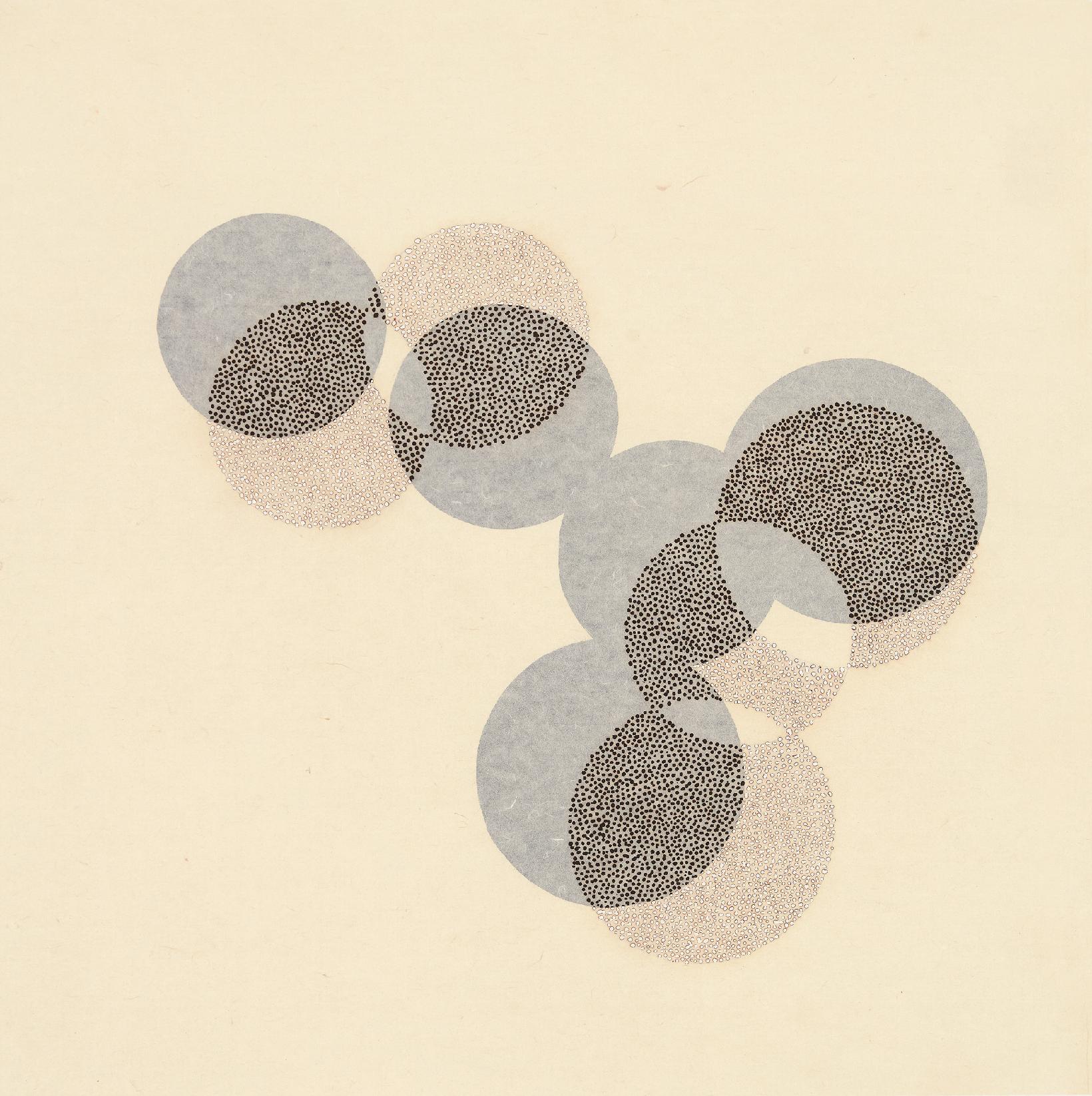
*글 하단의 '한국어 텍스트 다운로드'를 클릭하면 원문을 확인할 수 있습니다.
What if there is one kind of art that reverberates the agitation of the world, and another that imperturbably follows its path, away from the vagaries and vicissitudes of its time? The former holds up a mirror to society, reflecting its hopes and concerns, its visions and achievements. It also acts as its seismograph, testifying to man’s prodigious ability to move forward and to his stubborn, irrepressible desire to transcend boundaries and subject everything to his will. This art is inextricably linked to history in general, and the history of art in particular, yet depends on that which, at a given moment, is valuated, appreciated and celebrated, most often by the victors of the day, whose ultimate fate is to be replaced and forgotten.
The latter does not aim for a noisy and frantic presence among men. It does not seek to impose itself, but patiently explores the depths of the soul, suddenly unearthing its unexpected beauties. There is something timeless about it. It is insensitive to the modes and imperatives dictated from the outside, unfolding solely according to its own principles. Moreover, it exposes itself with great reserve at best, only revealing itself to the attentive and perceptive gaze, like calligraphic rolls patiently waiting for expert fingers to extract them from their precious boxes and break their seals. It also brings to mind seeds capable of waiting in the shade to germinate until the time is ripe - a sign of their inner strength as well as their profound and inescapable desire to be in the world.
If these categories exist, the work of Minjung Kim is part of the second.
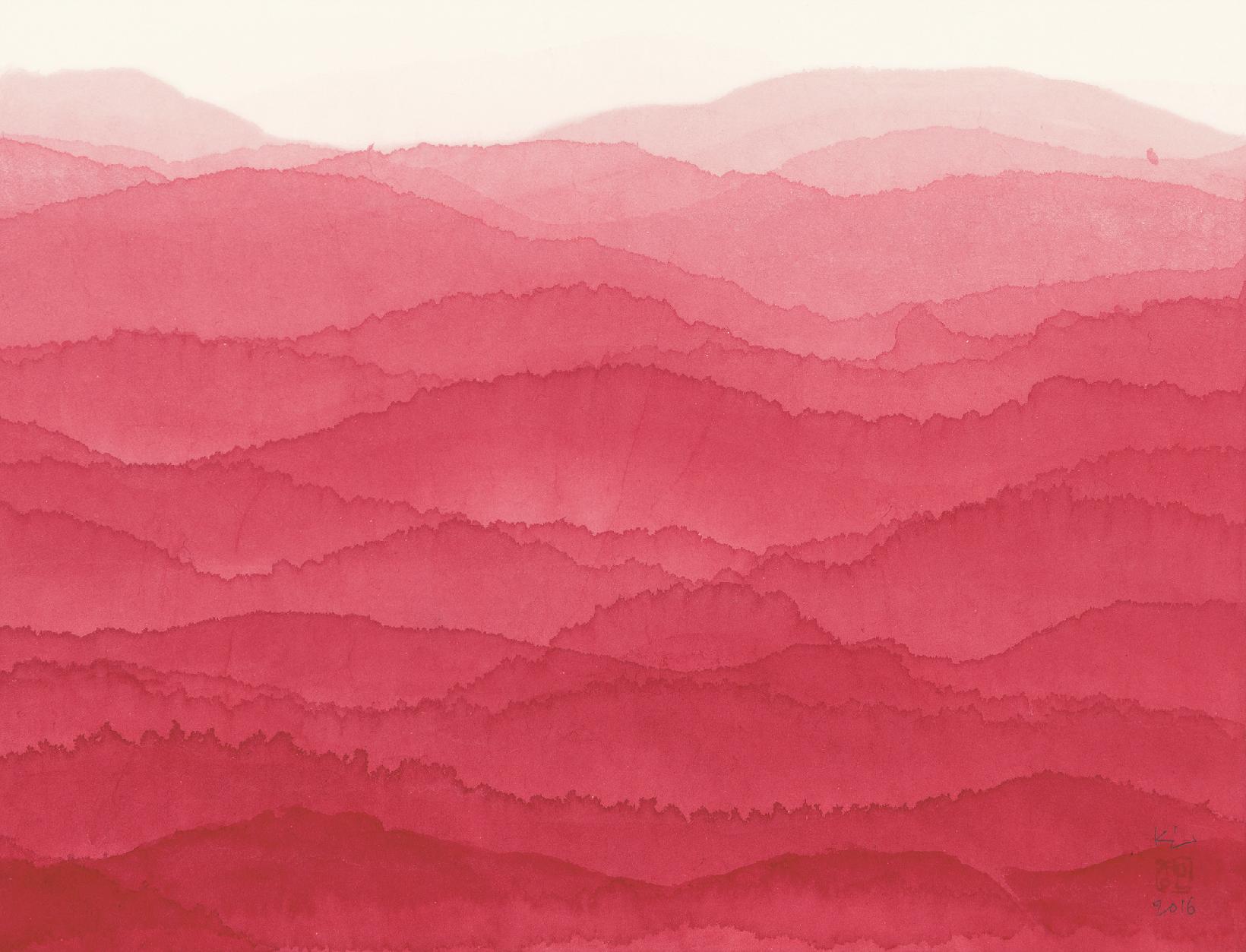
Kim studied calligraphy and painting in her native Korea, following in the footsteps of the masters who, in the mid-1970s, opened new paths for the country’s art scene and who are known today collectively as Dansaekwha (minimalist painting movement). Prior to this, from the age of nine and up to her adulthood, she was introduced to art by the venerable watercolourist Kang Yeon Gyun, whom she still considers as her spiritual guide. In 1991, she travelled to Italy to familiarise with Western art and studied at the Brera Academy in Milan. She has since developed a body of work that remains faithful to Oriental artistic conceptions - or, in any case, what Westerners like myself perceive to be Oriental conceptions - while merging them with an experimental approach influenced by the European masters she admires.
In Kim’s exhibition at the Musée des Arts Asiatiques (the Museum of Asian Arts) in Nice, large formats hang side by side with smaller-sized works. Both types of works feature organic forms, geometrical structures, sweeping calligraphic gestures and countless indeterminate signs scattered across the surface. Sometimes there is colour - frank, joyfully celebrating its presence. I’m struck by the delicate yet paradoxically firm and intense touch with which everything has been executed.
As I get closer to the works, what I took for paintings or drawings turns out to be collages. Indeed, Kim’s works consist of nothing but paper, ink and fire or, to be precise, the effect and traces of fire on the untreated material. The handcrafted (Hanji) paper comes from Korea, as does the ink. I learn that this attachment to traditional materials owes as much to Kim’s artistic training as to her upbringing: her father ran a small printing house, which means that as a child she was literally immersed in the millennial history of paper and its deep roots in Asian culture. Yet fascinated by the formal wealth of the imagery that emerges from this seemingly constraining reduction of material and technical means, I fail to understand immediately that all her work relies exclusively on these three components.
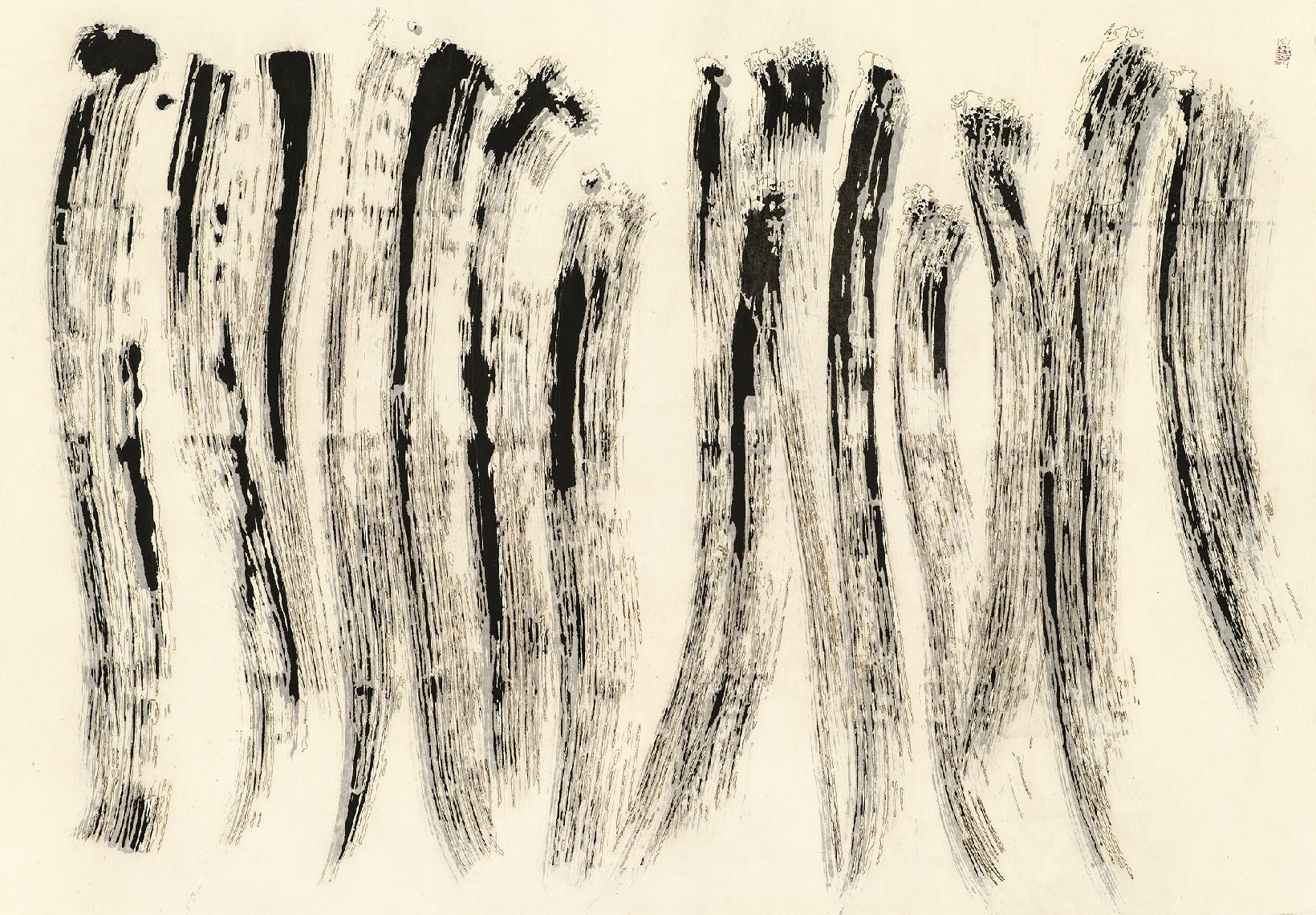
I suddenly become acutely aware of time. The time it took me to see and the time it took for what I see to emerge. What if art were situated somewhere between these two temporalities?
The meticulousness of the work delights me. It amuses me to think that it defies the speed of the contemporary world. Kim proceeds by small, endlessly repeated gestures, which gradually combine into a simultaneously coherent and gentle whole. Yet their nature varies from one series to another.
In Phasing, for instance, a first sheet of paper receives the calligraphic gesture, a controlled yet unique and non-reproducible gesture - all the more so as it often takes the form of a spontaneous gushing of ink. On a second sheet of paper, Kim then mapped the outlines of the first, then used an incense stick to cut out the part corresponding to the ink stains. This surface acts to a certain extent as the negative of the first, or more exactly, as that which brings to light its contrary while simultaneously complementing it - a conception that we Westerners generally interpret as a characteristically Oriental holistic approach related to yin and yang doctrine. So whereas the original gesture consists in applying the ink, the second gesture creates a void; and the quick yet resolute execution of the one is echoed by the patient and painstaking reconstruction of the other.
The subsequent superimposition of the two sheets reveals both the work of the hand and the very nature of the paper, which distends and expands according to its own properties beyond the artist’s control, thus completing a cycle in which material and technique are closely intertwined: the paper is produced from the tree supplying the wood burned for the manufacture of the black ink that shines through the burned holes of the paper.
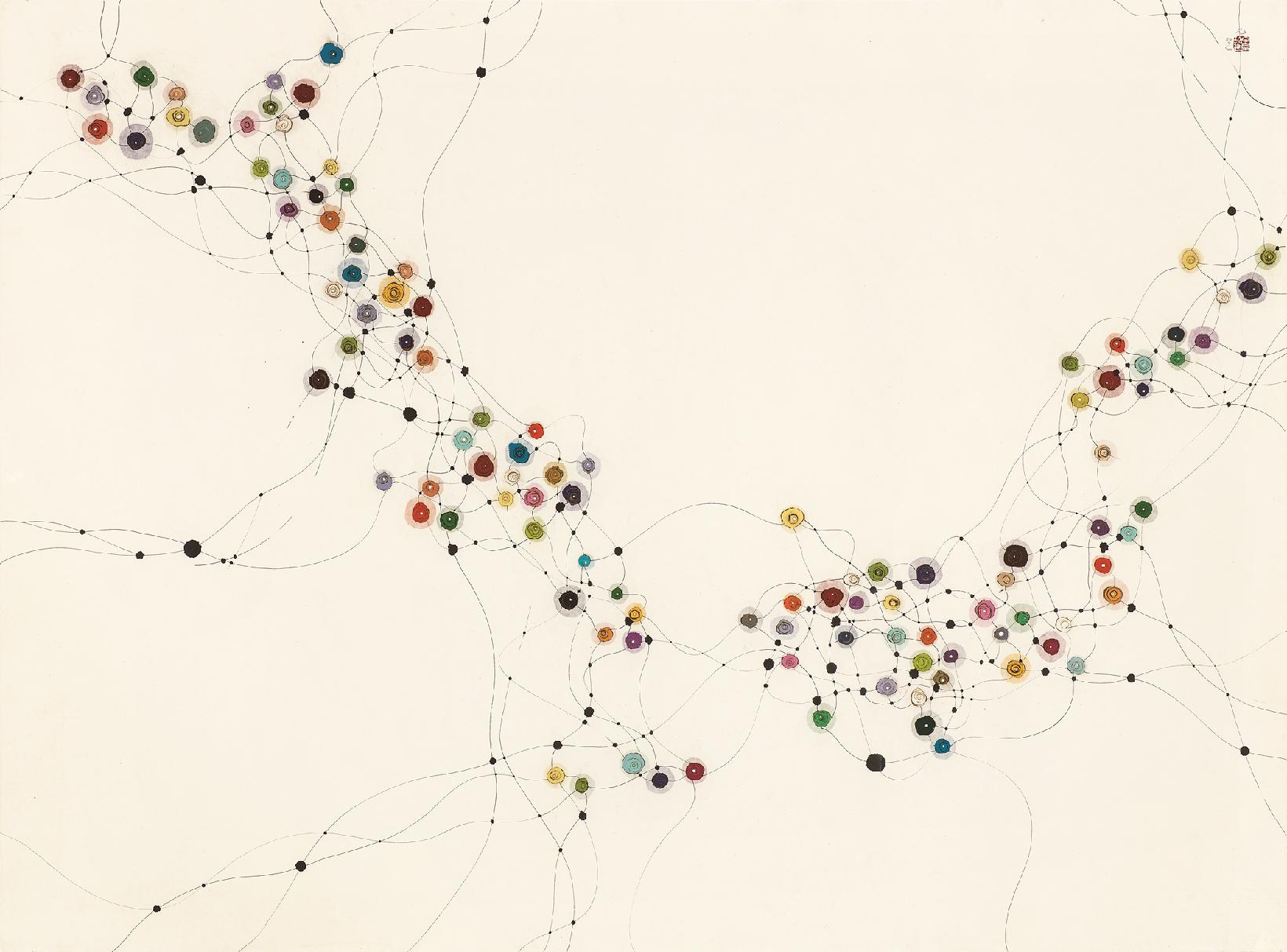
In the same series, instead of gestural writing, the paper sometimes features a constellation of perfectly round shapes cut out of black Hanji paper. The process remains the same: the artist transferred the arrangement of circles onto a second sheet of paper, and then used an incense stick to prick out the encircled surfaces. By leaving out those corresponding to their intersections, she obtained a fine lace of interlocking circular patterns. The two sheets are slightly offset so as to create a playful - I would suggest: musical - rhythm, all the more so as the artist took some liberties tracing the initial composition.
Slowly, I realise that it is the delicate superimposition of the layers of paper that lends Kim’s works this unique materiality. Their perceived rather than palpable thickness is further underlined by the transparency effects characteristic of the support, which create subtle nuances of colour even when they are limited to shades of black, white and grey, the burned edges of the holes adding brownish tones that enliven and warm up the composition as a whole.
I could look all day at the innumerable poetic variations this produces, irrigating oft-neglected fields of my sensibility, triggering all-too-rare sensations and thoughts - maybe because today’s world, with its artificial multiplicity, only cultivates the ready-to-see and ready-to-think.
Kim’s series all give free reign to the inexhaustible possibilities of combination and sequence created by the manipulation of paper, the application of the ink and the use of fire - as though the artist continuously reintroduced herself into the cycle of materials and elements to accompany their becoming. From the choice of paper to the patient collages, meticulous cuts, controlled burns and systematic yet open compositions, everything in Kim’s work bears witness to concentration and contemplation, understood as the active forces of the mind and body at the service of aesthetic and spiritual research. I sense, of course, a fundamentally respectful attitude to the nature of things, an approach aiming to resonate with the universe, a philosophy of life derived from Tao teaching and Zen masters - of which a kind of echo can be heard in the West in pre-Socratic thought and the Platonic idea of dialogue with one’s own soul as the source of all knowledge.
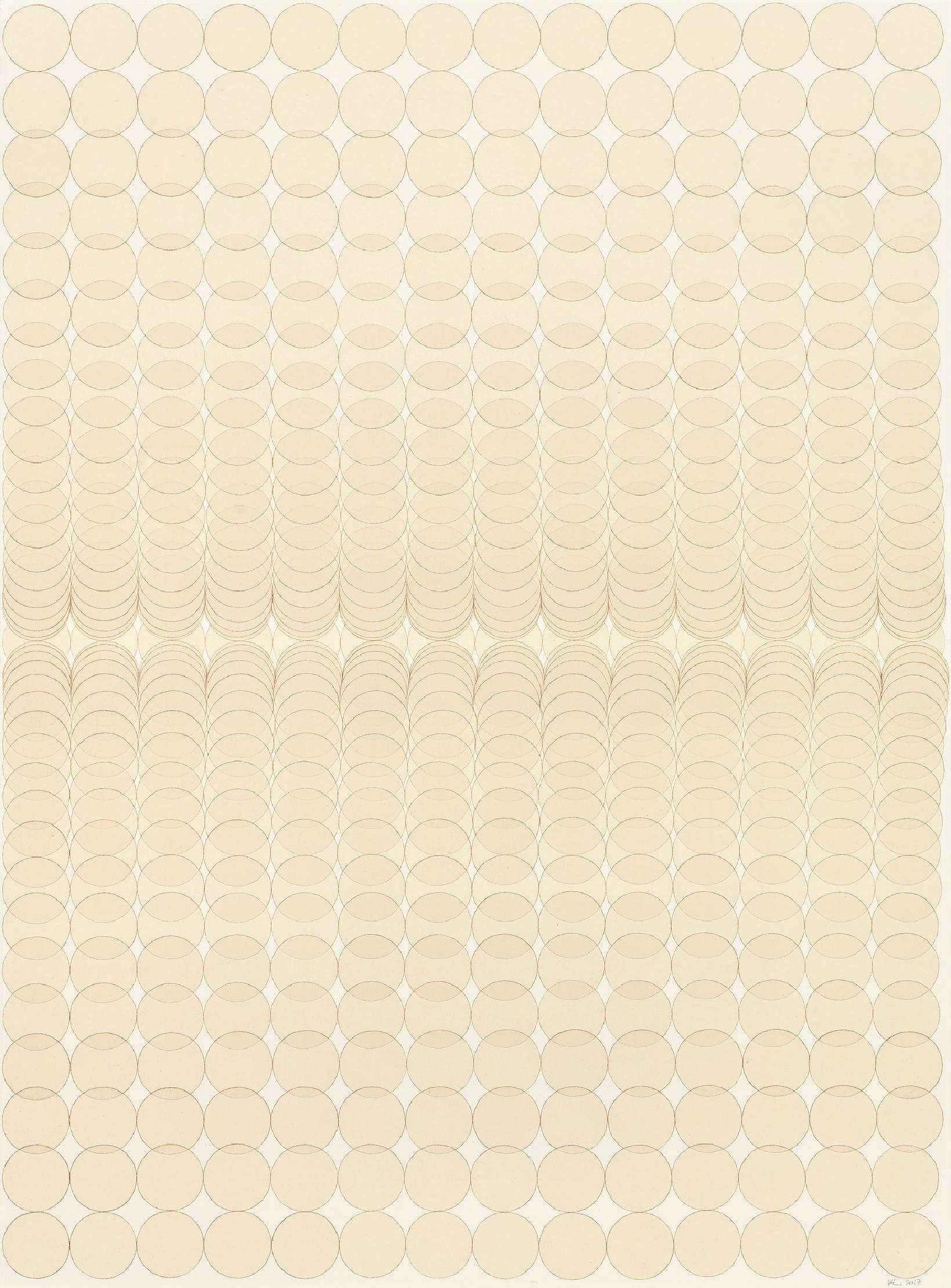
2017
Mixed media on mulberry Hanji paper
193 x 142.5 cm
In Insight (2017), for instance, the sheet of paper is covered in regular circular forms, which are systematically placed side by side or partially overlapping in an almost hypnotic rhythm that evokes both Op Art and Serial music. In Order-Impulse (2017), Kim starts by placing a white disk with slightly burned contours on a uniformly black background; each additional circle encroaches on the previous one, progressing along an open, spiralling or chaotic line. The result is a kind of abstract multi-cellular organism that pulsates thanks to the interplay of multiple sedimentations and transparencies. In a way that essentially escapes me, it reminds me simultaneously of Paul Klee and American Minimalism - a great aesthetic leap that seemed inconceivable just a moment before.
And then there are the Kim’s dazzling colour works. Here, too, each sheet of coloured paper was cut out, treated with fire, then juxtaposed or superimposed on another sheet, until the surface was saturated with luxuriant flower-like patterns (Pieno di vuoto, 2008) or subjected to the rigor of geometric order (Story, 2011). The intense pleasure that this vision instantly conveys only enhances the deep respect I feel when thinking of the long inner silence that was necessary to make this possible.
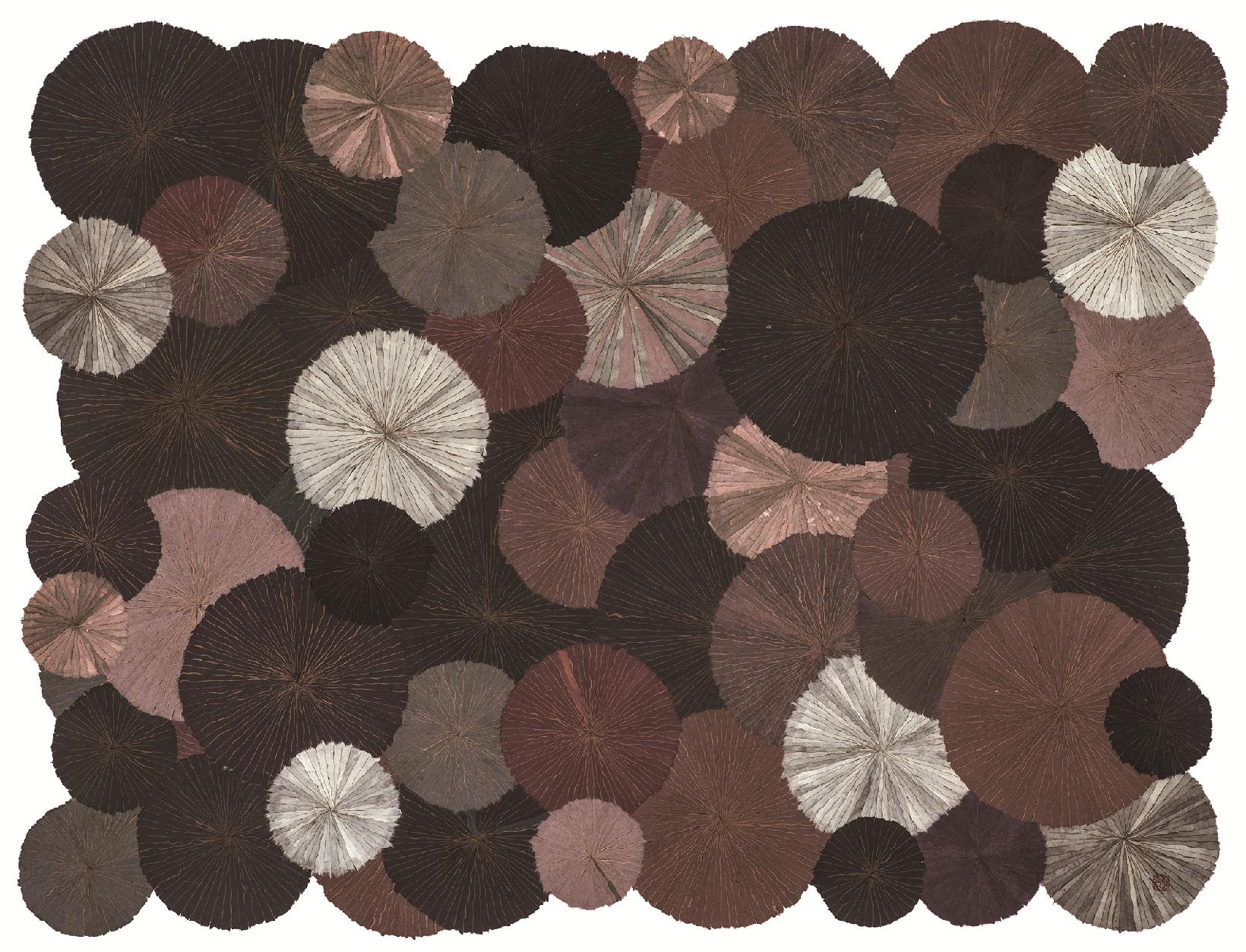
What if the works in front of me were merely the ashes of Kim’s creative process - a process revived by meditative contemplation? Then the paper, the ink, the soft burn marks on the edges, like Phoenix, would merely await the loving gaze of the viewer to sing again their hymn to life.
Enjoying and letting the beholder enjoy the mind’s immeasurable faculty of apprehension, while limiting as much as possible one’s own mingling with the state of things, and doing so only in order to add seeds of beauty and joy: this could be the great ambition of art today, which the work of Minjung Kim has inspired in me.
This essay from the exhibition catalogue of Minjung Kim - Paper, Ink and Fire : After the Process at Gallery Hyundai.